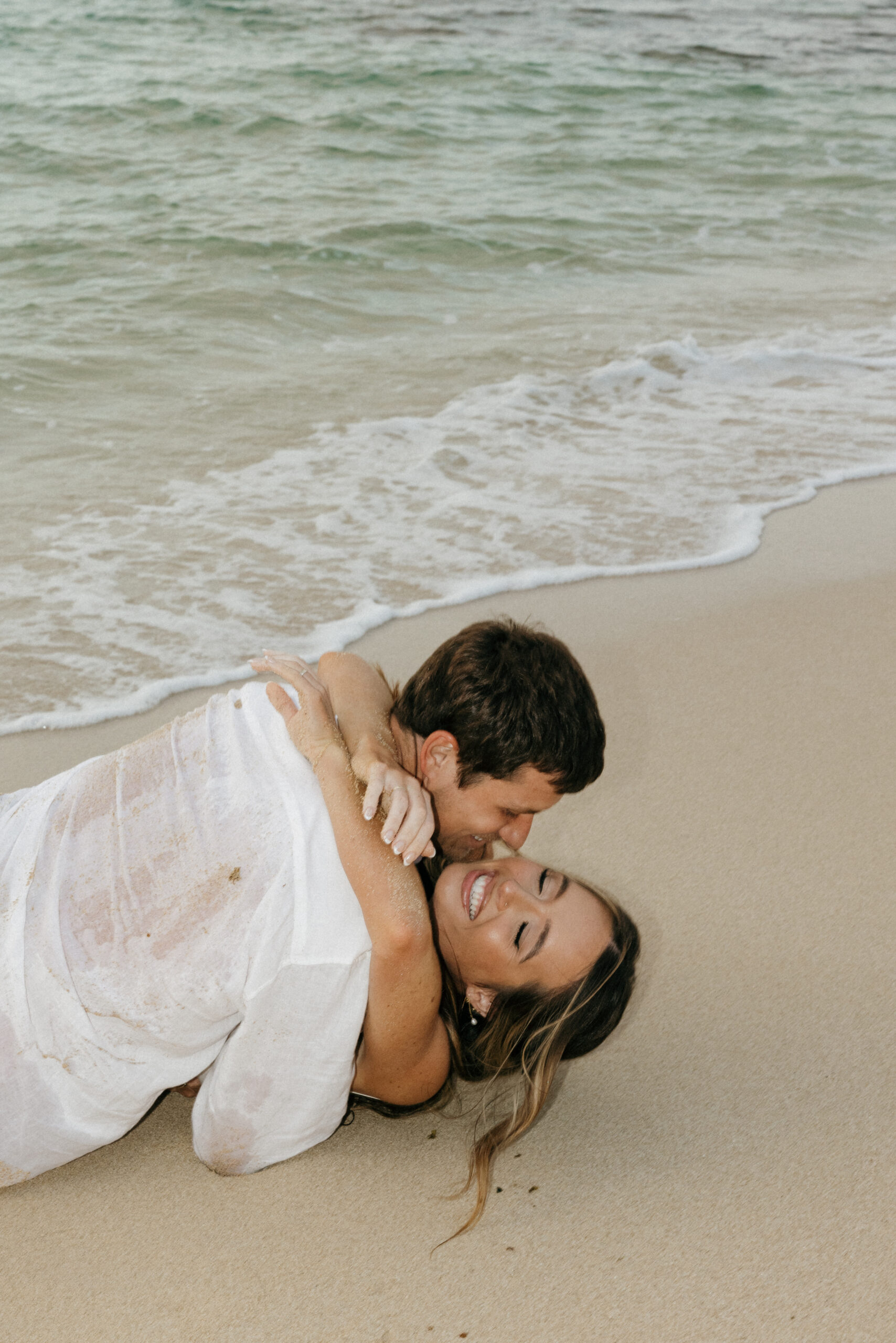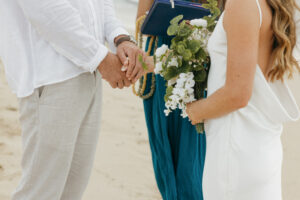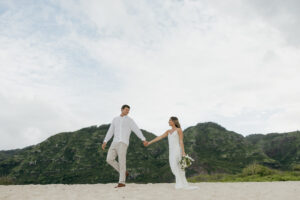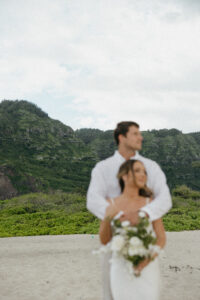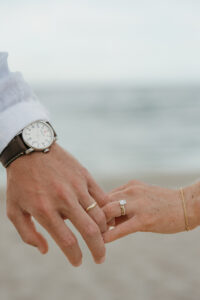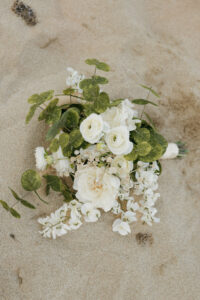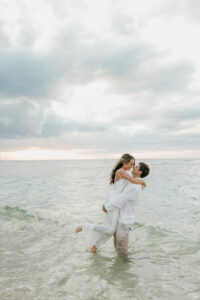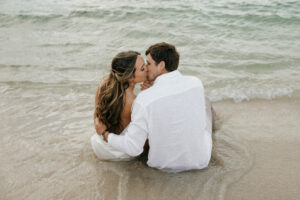Eloping in Hawaiʻi can be a magical and memorable experience. Here are some tips to help you plan your elopement in the beautiful Hawaiian Islands.
- Choose a location (or in this case an island).
- Hawaiʻi is made up of 8 main islands (7 of which are inhabited): Oʻahu, Maui, Kauaʻi, Hawaiʻi Island, Lānaʻi, Molokaʻi, Niʻihau, and Kahoʻolawe). With it comes stunning backdrops, from lush gardens and waterfalls to pristine beaches. Below I go into depth about the different Hawaiian islands & what they have to offer.
- Book your Hawaiʻi Elopement photographer (& videographer)
- Contact me for a free consultation call on your Hawaiʻi elopement plans!
- Here we’ll discuss everything you need to know about Hawaiʻi. On this call we’ll discuss all details (ex: locations, time, officiant, permits, etc.) and everything else you need to know when planning your elopement.
- Contact me for a free consultation call on your Hawaiʻi elopement plans!
- Book your flight & lodging
- Apply for a marriage license.
- Have an epic elopement in Hawaiʻi!
- Take some time to enjoy Hawaiʻi.
- Hawaiʻi is such a unique place so take some time to enjoy the islands, go on some adventures, and savor the local culture & food.
Hawaiian Islands
- Oʻahu, the most popular of the Hawaiian islands, is home to vibrant cities like Honolulu and Waikīkī, and the infamous North Shore. Despite its urban life, Oʻahu still has an abundance of natural beauty, remote locations, and offers remarkable hiking opportunities.
- Maui, often nicknamed ‘The Valley Isle,’ is Hawaii’s second-largest island, renowned for its stunning beaches, sacred ʻĪao Valley, Haleakalā State Park, and exceptional whale-watching opportunities, especially during the winter months.
- Kauaʻi, often referred to as the ‘Garden Isle’ due to its lush green mountains and valleys, is one of Hawaiʻi’s least populated islands. This enchanting island features incredible views (some only accessible by sea or air) and a laid-back atmosphere, along with a rich culture that thrives in its charming small towns.
- Hawaiʻi Island (also known as Big Island), is the largest of the Hawaiian islands. Home to sites like Hawaiʻi Volcano National Park, Mauna Kea (the second-highest peak of an island), black sand beaches, and so much more!
- Molokaʻi, often regarded as one of the least touristy destinations in Hawaiʻi, is the fifth-largest island, measuring just 38 miles long and 10 miles across at its widest point. The island is home to many of Native Hawaiian ancestry with a strong commitment to preserving their rural way of life through their deep connection to the land. The island is known for the world’s tallest sea cliffs and the historic Kalaupapa National Historical Park.
- Lānaʻi, one of Hawaiʻi’s smallest islands, offers a serene escape from the bustling world. With limited paved roads, little to no crowds, and a slower, more relaxed pace of life, it’s a true haven for those seeking tranquility. Lānaʻi is home to the historic and enchanting town of Lānaʻi City, captivating hiking trails, beautiful beaches, as well as a select few luxury resorts.
- Niʻihau, privately owned by the Robinson family, is a unique Hawaiian island with fewer than 100 native Hawaiian residents. The island was acquired in 1864 by Elizabeth Sinclair, who made a commitment to preserving the indigenous culture for the Hawaiian people residing there. This dedication to cultural preservation endures to the present day, making Niʻihau a destination that is not open to public visitation.
- Kahoʻolawe, the smallest of Hawaii’s eight islands, remains uninhabited due to its historical use as a military bombing range following the attack on Pearl Harbor. As a result, access to the island is restricted due to the potential presence of unexploded ordnance.
